When the going got tough the Trail spirit kept them going
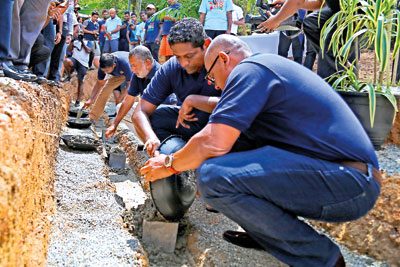
Laying the foundation stone: (R-L) Sarinda Unamboowe, Nathan Sivagananathan, Rajendra Theagarajah and others. Pix by Anuradha Bandara
“When I called Sarinda and told him that I had a bad day, he told me to think about the people living with cancer, how they had to suffer every day. That got me through,” says trailblazer and General Manager of the Sri Lanka Aviation College Primal de Silva, one of 30 Trailblazers who walked the entire 670km of the Trail walk.
Spearheaded by Sarinda Unamboowe and Nathan Sivagananathan, Trail 2016 which began on October 6 at Point Pedro saw walkers traverse the length of Sri Lanka from north to south in their effort to raise funds for cancer treatment. Their goal: USD 5 million to build a cancer treatment unit for the Karapitiya Teaching Hospital. On November 2, after 28 days on the road, they reached their destination- Dondra Head, having drawn an overwhelmingly generous response from Sri Lankans from all walks of life along the way who joined in to walk some distance with them or made their contributions, small or large, all gratefully accepted. They raised over USD 3 million.
The walk was divided into nine zones, each zone lasting three days. A zone covered around 65-75km, with each day covering 16-30 km (except day 28 with 7 km). Starting at 5.30 a.m., the walkers completed the day’s distance, usually around 10 a.m.
Walking great distances over consecutive days in our weather is not something to be attempted lightly. Most of the trailblazers spent months training. CEO of National Development Bank (NDB) Rajendra Theagarajah trained for the walk since February, walking 10-12km a day on weekdays and 25km on weekends, while International Development Consultant Lalith Dassanaike began walking, jogging and going to the gym from April to get fit. Primal trained for the walk from July.
The first week was the hardest, they agreed. “Your body gets used to it after six or seven days,” explained Lalith. The walk itself cannot be trained for because its duration, differences in terrain, temperature and population etc. cannot be reproduced, he felt. Rajendra said the most difficult part was in the north – this was the first week and the scorching heat and lack of people made it quite exhausting. Zone two, from Kodikaman to Iranamadu was the hardest, he said. “When you’re walking, you see a straight road with no one on it and that’s when it becomes psychologically tough,” he said. Lalith avoided looking at his watch because that would have been demoralising. “You see the time and you realize how many more hours you have so I didn’t look at my watch.”
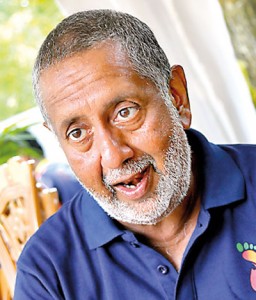
Rajendra Theagarajah: Falling sick didn’t stop him
The hardest part for Primal was when his muscles herniated. He ended up travelling to Colombo every four days for physiotherapy, only to travel back, walk the next four days and return for physiotherapy. Once he travelled to Colombo during Zone Four (Medawachchiya – Thambuththegama) only to return to the next day’s starting point at 1 a.m. and start the walk at 5.30. That was not the worst. When he lagged behind the rest of the team by 2km for the first few days, the going was tough. What kept him going was the Trail spirit. “It’s easy to give up but it isn’t easy to let down a team,” he states simply.
For Rajendra, the most difficult part was when he fell ill during the walk. “On the day we were to walk from Thambuththegama I woke up with very high fever, so I decided not to walk that day. To complete the walk, I walked the 22km from Galgamuwa to Daldagama, walked back to Thambuththegama and walked 10 km, walked 20km from Daldagama to Padeniya and went back to where I stopped in Thambuththegama the previous day and completed the entire distance. Everyone walked 30 km only on one day – and that’s the longest distance, but I did it on three days,” he says. He learnt that keeping his feet in ice the minute he finished the walk to avoid stiff muscles helped– a tip from Mahela Jayawardena!
The trailblazers all agreed that the support from the volunteers and the rest of the core team was invaluable. “Once they recognized that you were a regular walker, the team would walk up to you and cheer you on,” said Rajendra. Primal was also grateful for the support he received from Nathan Sivagananathan, Sarinda Unamboowe and Mahela. “I still feel that getting into the rhythm of walking was easy compared to being on the core team,” says Primal.
What was it like to be a part of this core team?A moving experience, says MAS Business Entrepreneur Tanisha Panditharatne, who was a volunteer. Organizing the event began last year and Tanisha has been devoting her free time to it since then.
In charge of issuing tills for the walkers, Tanisha estimates that they must have handed out around 10,000 tills along the way. Having to report to the starting point an hour before the walk began, she would ensure that all the tills were distributed, walk part of the distance and start collecting the tills at the end. “In the middle there was this nice window where I could also take part in the walk and I really enjoyed that,” she says. Keeping in touch with her family was easy with social media but she missed her mother’s chicken curry. “My family and friends would follow our website and the page and know exactly what was happening,” she says. The passion with which everyone took part made it quite easy to stay committed, she said.
“Sarinda and Nathan wanted the walk to start at 5.30 sharp no matter what,” laughs Head of Lean Enterprise and Sustainability – Linear Aqua, Lalith Herath, who was in charge of logistics.
Lalith explained that the core team would be divided into teams that handled specific tasks, all of them ensuring that the starting point, end point and four feeding points along the way were ready along with the vehicles which would accompany the walkers, in addition to sorting out accommodation etc. for the walkers. For them, the day did not end with the walk. “In the morning we would check out the stretch which was being walked that day and after the walk we would check out the next stretch and make sure that the feeding stations etc. were set up,” he says, adding that they would work from 3 a.m. to around 8 p.m. daily. What he missed most were his children – 11-year-old Sanuly and seven-year-old Vinuja.
After being on the road for almost a month, there are mixed feelings at the end. Rajendra will miss meeting people he wouldn’t normally meet, while Tanisha will miss the team she worked with and Primal the exhilaration of the walk. “When I go back to Colombo I will wake up at 3 a.m. and not know what to do with myself,” he says. But there is no doubt of the great sense of achievement they feel at having been part of Trail 2016 with its mission to help those in such dire need.
Mahela makes emotional appeal 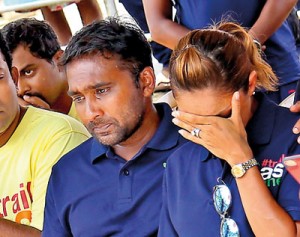 Mahela and wife Christina: A personal mission The organizers of the Trail walk like to think of it as something beyond just a hospital – they call it instead a concrete symbol of the unity of the Sri Lankan. At the ceremony held to lay the foundation stone for the new cancer unit for the Karapitiya Teaching Hospital, there were tears and joy. 27 long days of waking up at the crack of dawn and an entire year spent organizing the walk was all proving fruitful. As Sarinda Unambowe and Nathan Sivagananathan laid the foundation stones which have travelled all the way from the north of the island for a hospital that is being funded by people from all over Sri Lanka, it would appear that this is indeed a symbol of unity. The hospital will span 1.8 acres and stretch 10 floors – solid proof of their dream that has inspired so many Sri Lankans and is now bearing fruit for the second time. Cricketing legend Mahela Jayawardena, a driving force behind the walk having lost a brother to cancer even after he had the best treatment in the UK, was emotional when he spoke of how he wanted people who had a chance and couldn’t afford to go abroad for treatment to have access to better facilities. Deeply moved by the generosity of Sri Lankans, “we can’t choose our race or religion or how wealthy our parents will be, but we can grow up to understand right from wrong and need to look beyond race,” Mahela said, adding that he was glad to have an opportunity to be part of such a rich and rewarding programme. Director of the Colours of Courage Trust (the umbrella organization which organised Trail 2016 and the earlier Trail 2013) Rajendra Theagarajah said every single cent of the money donated would go to the hospital, and assured the accounts would be uploaded onto a public domain every few months so people knew where their money was going. He also made a plea to the Ministry of Health and the doctors and nurses who would take over the hospital “Once the hospital is built, please take care of it. Lots of blood, sweat, and tears have gone into it,” he said. |
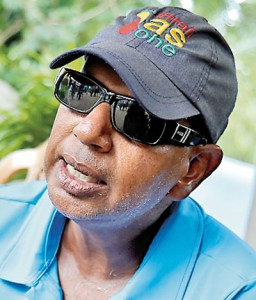
Lalith Dassanaike: The hardest part was the first part
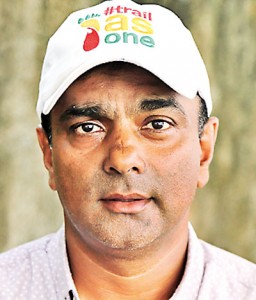
Primal de Silva: Went on despite herniating muscles
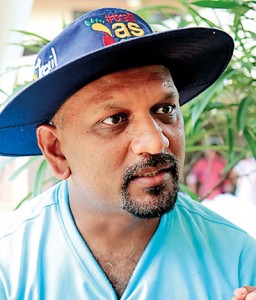
Lalith Herath:In charge of logistics
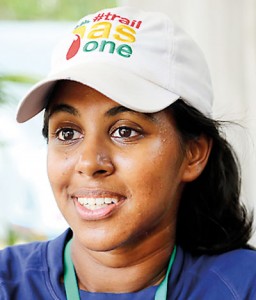
Tanisha: In charge of the tills


